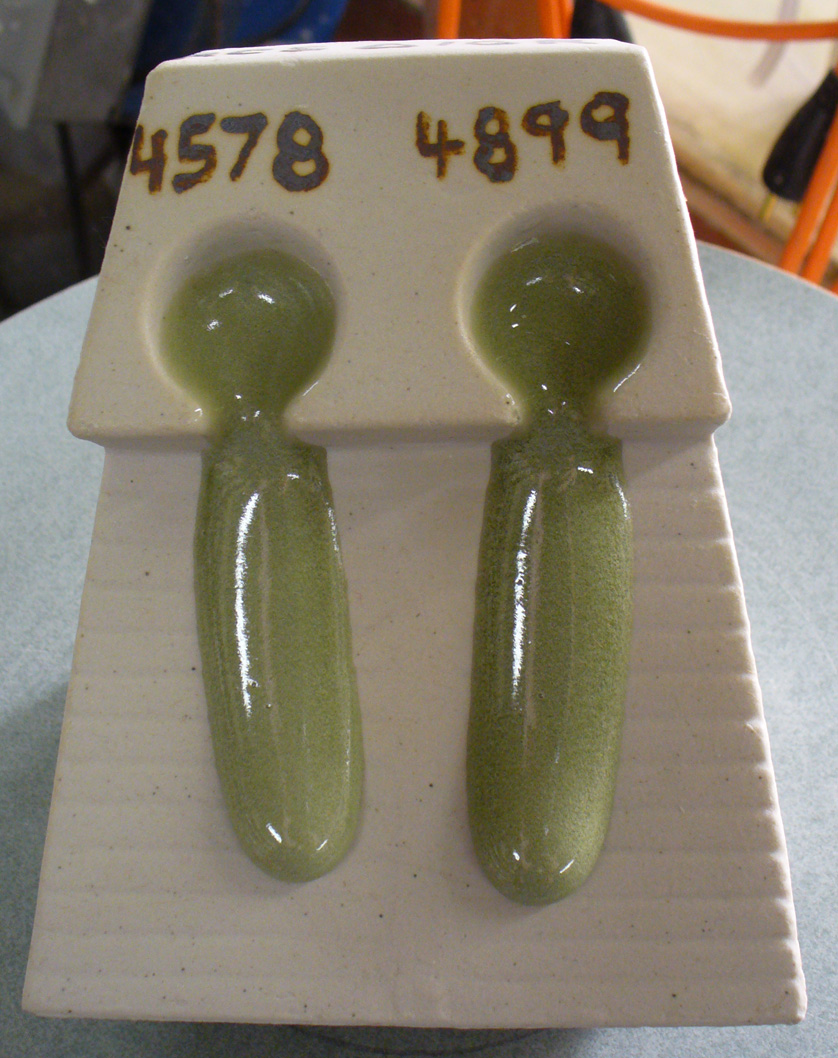Home
Glazes, Engobes
GR10-A Ravenscrag Slip as-a-glaze - Cone 10R
Description
Mixed all-by-itself, as a glaze, Ravenscrag Slip fires a semi-transparent at cone 10R (we recommend a raw:roast mix, see below). Add a little talc for a beautiful silky matte or Zircopax to opacify.
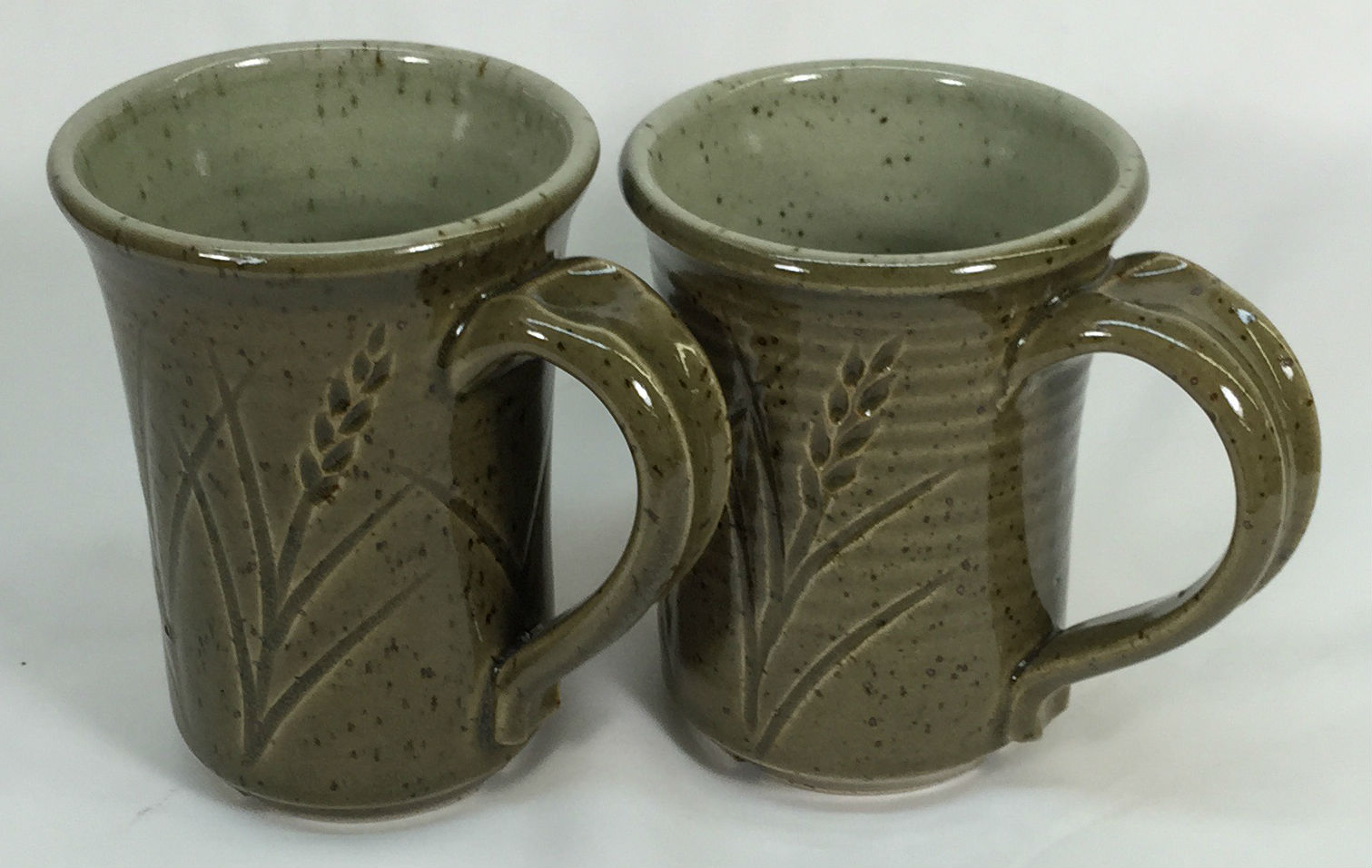
Cone 10R mugs. Plainsman H550. The liner glaze is pure Ravenscrag Slip GR10-A and the outside glaze is a 50:50 mix of Ravenscrag and Alberta Slips (GR10-E). By Tony Hansen.
Glazing
When mixed with water to create a thixotropic slurry, this will perform was as a dipping glaze. It will apply evenly to bisque, produce minimal dripping, dry within seconds and be adequately durable for handling. We document procedures to mix this as a brushing glaze or dipping glaze.
If you are glaze layering (using this as a dipping glaze and painting a commercial gummed brushing glaze over it) there is a risk of crawling. It may be necessary to add some gum to this, converting it from a dipping glaze to a base-coat dipping glaze.
Recipe
The recipe is 50% raw Ravenscrag Slip and 50% Roast Ravenscrag Slip (see below for info about roasting). More information about this recipe can be found at digitalfire.com, click the following: GR10-A. See also the Ravenscrag Slip page.
This recipe is most often prepared using the traditional method of simply adding water until the desired consistency is achieved (do the initial mix with 8 parts water and 10 powder). No flocculant additions are generally needed and application properties are very good as long as the slurry is not too viscous or too runny (dries quickly without cracking and, after dipping, there is minimal dripping).
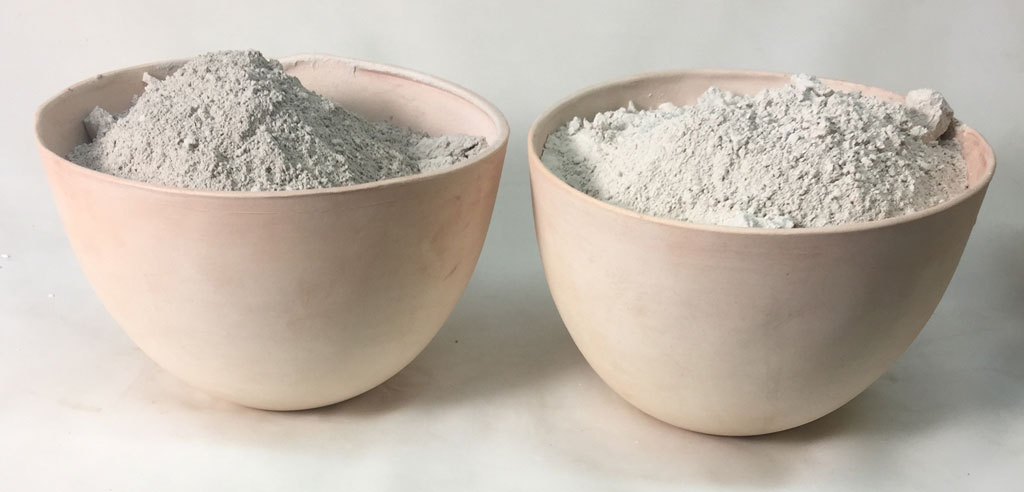
Left: Raw Ravenscrag Slip powder. Right: Roasted at 1080F. This is a silty clay, thus it has a relatively low drying shrinkage. Where a glaze is applied thickly or the percentage of Ravenscrag is high, shrinkage cracks (which produce crawling during firing) can occur. We recommend a mix of roast and raw material in recipes. Roasting the Ravenscrag powder at 1000F greatly reduces the shrinkage. Use a firing rate and hold-time-at-1000F appropriate for the wall thickness and size of your bisque vessels (e.g. 500F/hr and 30 minutes for thin-walled small vessels, slower and longer hold for large ones). If any of the powder within is black, increase the hold time for the next firing. Adjust proportions as needed (more roast if the glaze cracks on drying or more raw if it is drying too powdery or not bonding well).
The roasted material has a weight-loss of about 3% on firing (vs. 9% for the raw powder). This difference can be ignored in most cases. But, to be more precise, use 3% less of the roasted powder (multiply the amount by 0.97). For example, suppose you need 1000 grams of a 50:50 raw:cacline Alberta Slip mix for a glaze recipe. Use 500 raw and 500*.97=485 roast.
Gallery
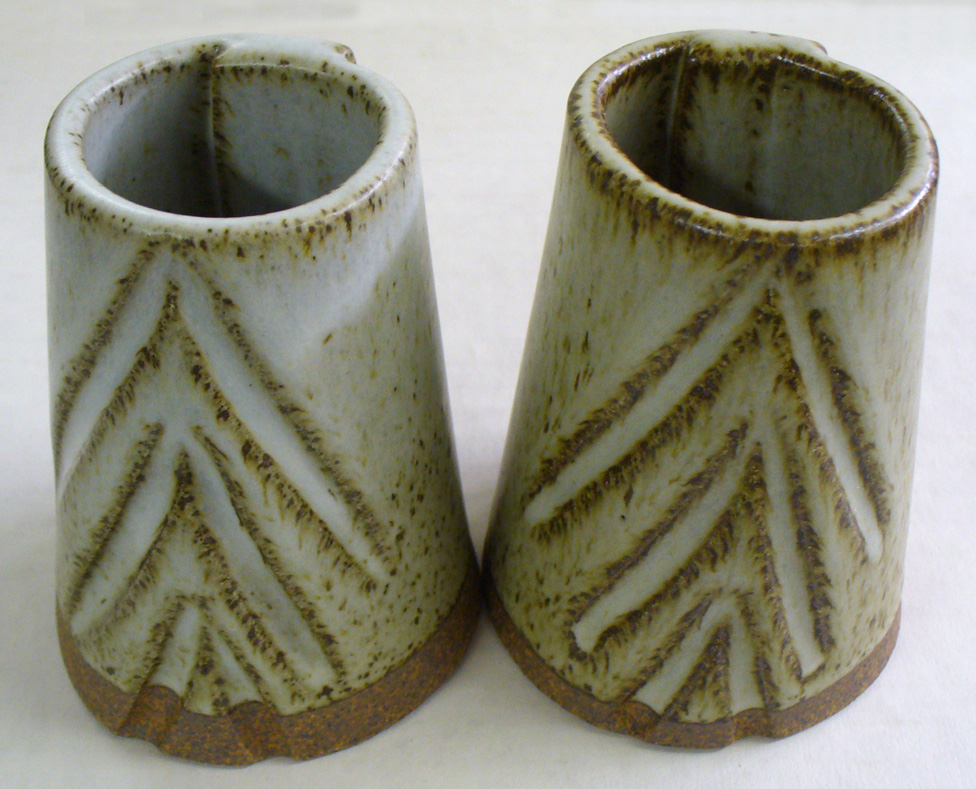
Left: G2571A magnesia matte glaze on H440 fired at cone 10R. Right: GR10-J is the same glaze (having the same chemistry) but made using Ravenscrag Slip to supply much of it.

Cone 10R mugs. Plainsman H550. The liner glaze is pure Ravenscrag Slip GR10-A and the outside glaze is a 50:50 mix of Ravenscrag and Alberta Slips (GR10-E). By Tony Hansen.
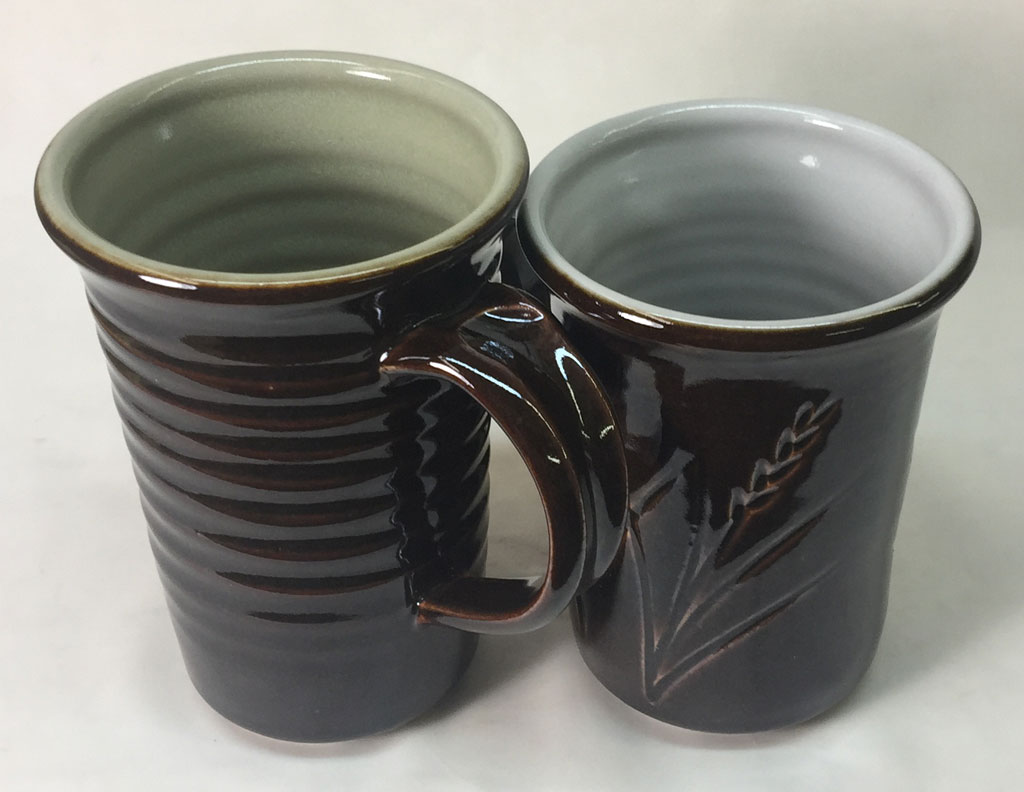
P580 with Ravenscrag GR10-A and G1947U (the liner glaze for each). The Ravenscrag is not quite as glossy and it contains enough iron to darken the color of the underlying porcelain. Zircopax could be added to whiten it, however it is best to limit the use of GR10-A to ware that has compatible aesthetics.
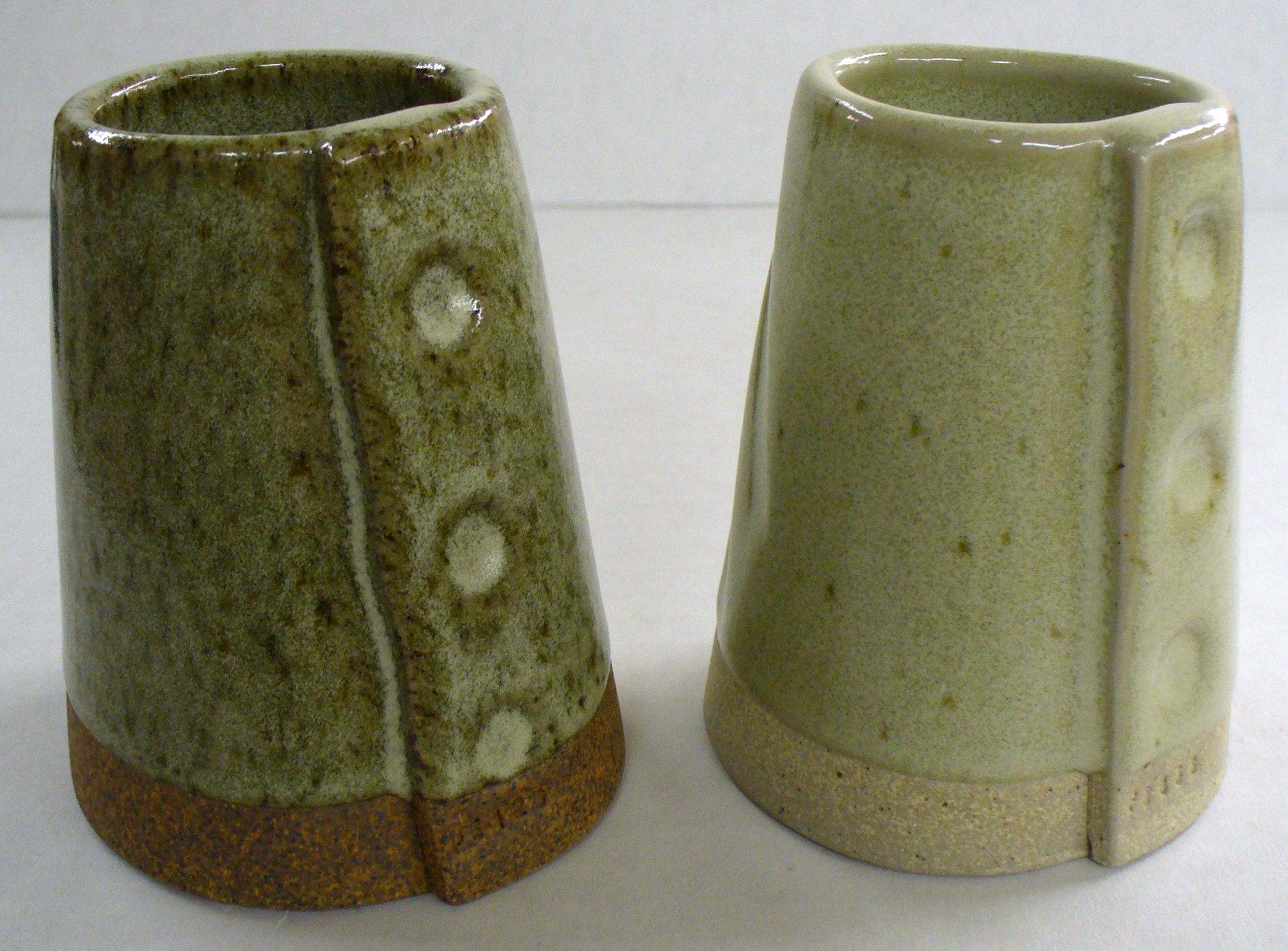
This is GR10-C Ravenscrag Talc matte on H440 and H450. Fired at cone 10R. The recipe is just pure Ravenscrag with 10% talc added.
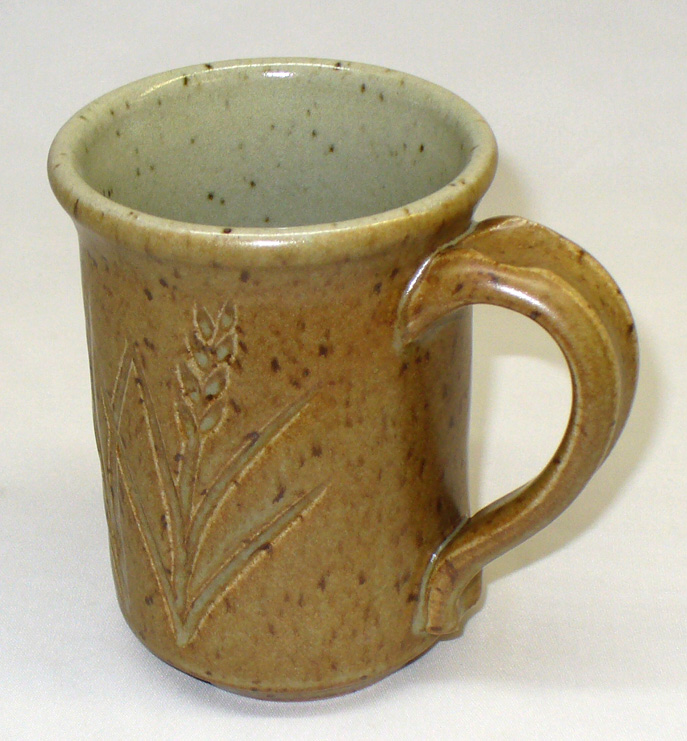
H550 and glazed with Ravenscrag Bamboo GR10-J1 (outside) and GR10-C Ravenscrag Talc Matte liner glaze. By Tony Hansen.
